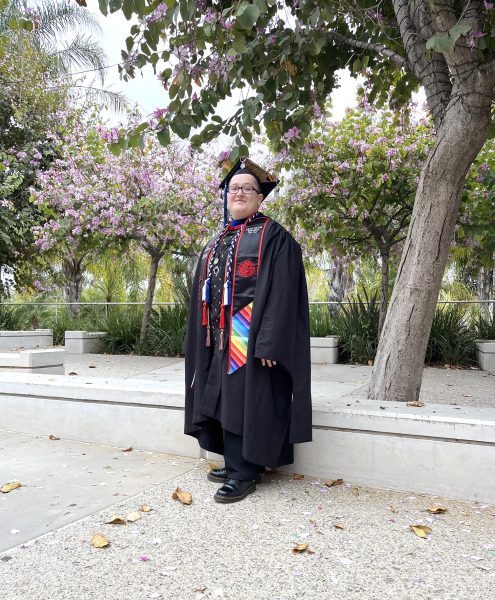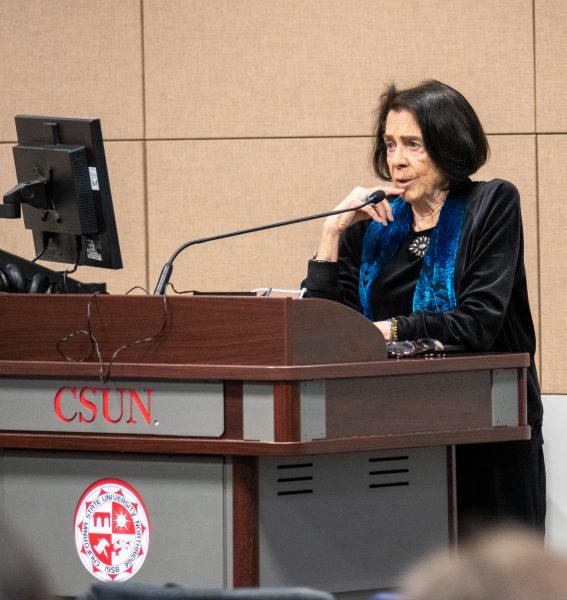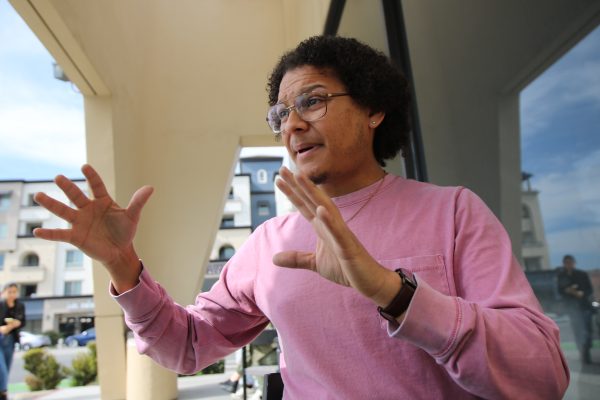What it takes to put on a theater production
October 10, 2022
The CSUN theater department is responsible for creative productions like “The Tempest” and “Evita.”
The director and crew of each production work vigorously to provide audience members with a fresh and unique experience with each play. The foundation of hard work sets the standard that is carried on from the audition process to the intense tech week rehearsal before the show.
CSUN’s theater department’s production “Hamlet,” directed by professional actor and theater professor Nikhil Pai, is a prime example of the rigorous process behind the scenes to produce a high-quality production.
Pai described the audition as a standardized process where the actor comes in with a 30-40 second monologue to perform before a panel of directors.
Pai comments that he focuses on how the actors adapt to taking direction and responding to certain requests. This specific interpretation of “Hamlet” references film noir elements, which was a focal point for the director in his casting process. Pai focused on actors who were able to follow specific directions to bring his translation of the piece into a theatrical production.
Unlike many performances under a rigid schedule of seven weeks, the “Hamlet” production was cast before summer break.
Upon completing the audition process, Pai stated that he “inundated the cast with guides on how to read Shakespeare. When we started, it was about getting ourselves familiarized with the story.”
Rehearsals for the show began on Aug. 8, and the cast and crew have been workshopping this production since then. Due to the incorporation of film noir into this performance, the choreography was a critical factor in bringing this vision to life. Pai and choreographer J’amie Morrison experimented with different shapes and gestures to incorporate film noir into the play.
Morrison played an influential part in adapting film noir into a theatrical performance. Morrison worked alongside the cast to “think about the world of the play with pace and movement.”
With a production of 17 actors and only seven weeks to rehearse, the cast and crew overcame many obstacles.
“Part of the process is getting everybody on the same page of telling the same story and that sometimes takes time. It was my job to identify what students needed,” Pai said.
In unison with the cast and crew, Pai directed a play that encompassed elements of film noir and collaborated with a creative team that worked together to create a relevant and unique interpretation of a Shakespearean play.
Pai hopes that “people enjoy it and are inspired to look at the text differently. To demystify Shakespeare.”
“A theatrical production is built on the perseverance and work ethic of every member, as the theater community adjusts to what and who we have,” Pai said. “It’s what we do in the theater, and there is no point in wishing, we are problem solvers.”










